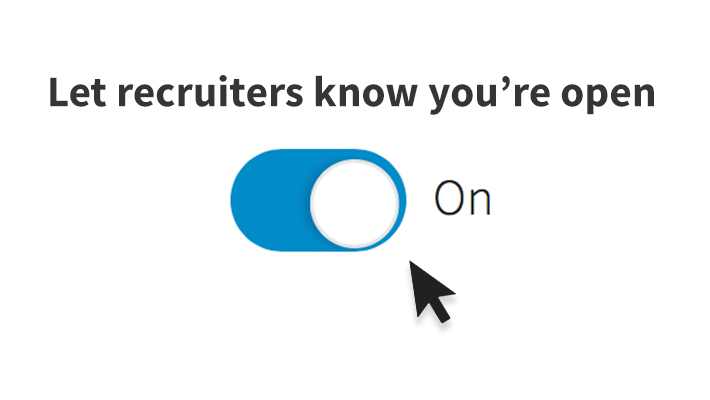A Close Look at "Open to New Opportunities"
Signaling that one is "Open to New Opportunities" without alarming your boss is certainly a good idea for a job seeker. Recently, LinkedIn introduced this feature.
If you are a job seeker, there are a couple of things to be aware of here.
(1) The signal you send gets only to LinkedIn Recruiter product subscribers. That subscription is quite expensive. For many smaller companies - both potential employers and smaller recruiting agencies (which may be serving large corporations!) - the product costs too much to buy. Just be aware that the signal only goes to some, not all professionals who might want to employ you.
(2) The "exact" employer, i.e. a registered company on LinkedIn, will not see your status. But any company working in a close relationship with your employer, for example, other divisions registered as separate companies and third party recruiters, can still find you as someone looking. Then, people from different companies who are friendly can also ask each other to search. An employer without the subscription can ask someone with a subscription to look. (Etc.) Here's a related discussion in our group.
It's progress, though - Recruiters, no matter which subscription they have, have not been able to search for members with paid "Job Seeker" accounts. So for people who are openly looking, I'd advise raising the flag on your account. For those who want to keep it a secret, I am not sure.
If you are curious how widely members have used the "Open to New Opportunities" signal, here are some statistics, measured this morning using LinkedIn Recruiter.
The global stats are the following - please note that (for a variety of reasons) the numbers are approximate:

Members who have set the status:

The "Open" members amount to 0.25% of all the membership, as of now.
It's the early days, so perhaps the stats show more of the membership using this function vs. those looking to leave. However, the stats narrowed down to the hiring company's industry, and location can be examined for employers who are potentially in trouble. Those would be the companies with the percentage of employees looking to leave, out of employees with LinkedIn profiles, being high compared to the average. In fact, I would say it is a way to investigate companies that might be good to research when sourcing for talent. (Right?)
Subscribe
All the recruiting news you see here, delivered straight to your inbox.
Just enter your e-mail address below
RecruitingBlogs on Twitter
Groups
-
Recruiters On LinkedIn
1801 members
-
Corporate Recruiters
316 members
-
Recruiting tips for begi…
180 members
-
The Recruiting Bar
190 members
-
Recruiting Humor
222 members
-
News from the Recruiting…
34 members
-
Contractors Recruitment
62 members
-
Recruitment Process Outs…
194 members
-
Virtual Recruiters Netwo…
619 members
-
Independent Recruiters
530 members
© 2024 All Rights Reserved
Powered by
![]()
Badges | Report an Issue | Privacy Policy | Terms of Service
About
With over 100K strong in our network, RecruitingBlogs.com is part of the RecruitingDaily.com, LLC family of Recruiting and HR communities.
Our goal is to provide information that is meaningful. Without compromise, our community comes first.
Join the Network!
RecruitingDaily.com
One Reservoir Corporate Drive
4 Research Drive – Suite 402
Shelton, CT 06484
Email us: info@recruitingdaily.com


You need to be a member of RecruitingBlogs to add comments!
Join RecruitingBlogs